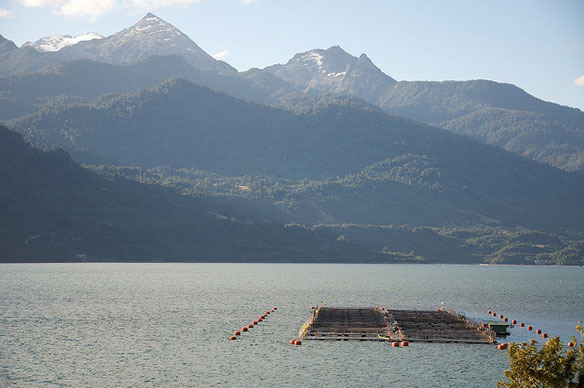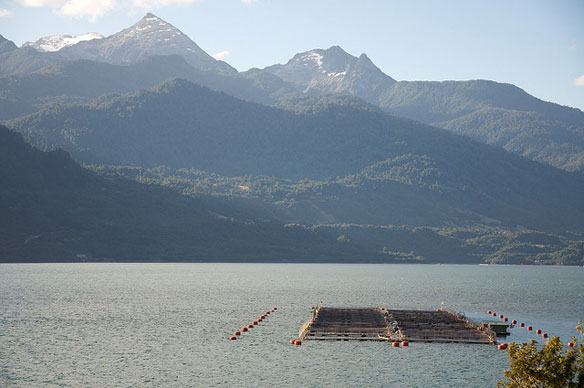
Fish farm, Chile. Photo source: ©© Sam Beebe
By the Wildlife Conservation Society
Chile is the second largest producer of salmon in the world. But these fish don’t occur there naturally. Instead, the salmon swim within enclosed nets, often tightly packed together. Kept off the country’s coastline, fish farms like these can pollute local ecosystems, displace native fish species, introduce diseases, and affect artisanal fisheries.
Over the last decade, the number of salmon farms has skyrocketed. But in Patagonia, Chile has begun taking steps to protect some of its wild waters from the farmed fish. WCS is commending the Chilean government for keeping the salmon industry out of Tierra del Fuego and reducing the practice in the Antarctica and Magellanes provinces.
“Chile has taken the right step in protecting invaluable coastal resources off Tierra del Fuego and nearby areas,” said Barbara Saavedra, Director of WCS’s Chile Programs. “These regions are home to rich concentrations of wildlife whose needs are only beginning to be understood.”
At the southern tip of South America, albatross, penguins, southern elephant seals, and many other species come to breed along the coasts. Since 2009, WCS has been studying Chile’s marine ecosystems and advising government officials on coastal zone planning.
Unfortunately, salmon farming still threatens other areas within Patagonia. WCS is working with partner organizations to assess alternative salmon farming techniques that might reduce the farms’ impact on these environments. In addition to identifying coastal areas for future protection, WCS conservationists are examining how salmon farming might affect the region’s burgeoning ecotourism industry.









